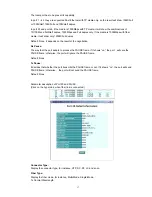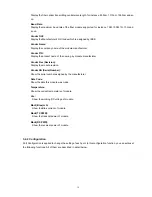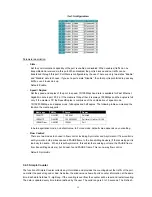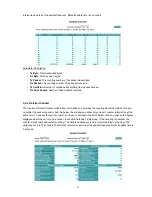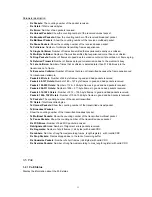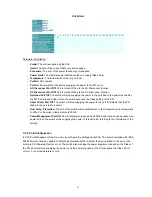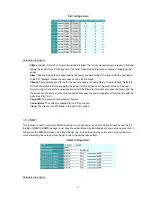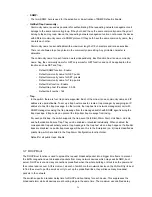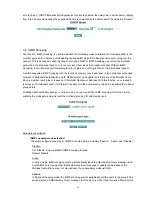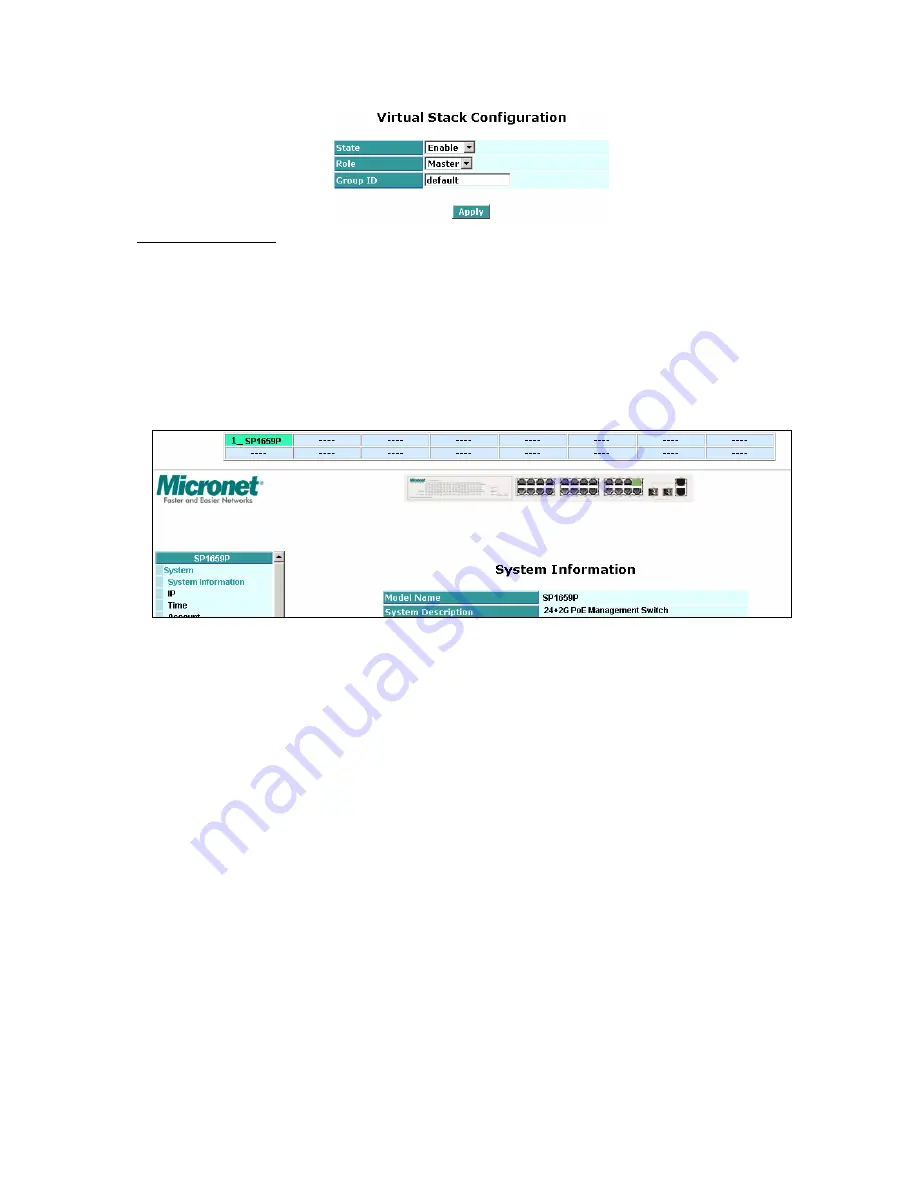
devices.
Parameter description:
y
State:
It is used for the activation or de-activation of VSM. Default is Enable.
y
Role:
The role that the switch would like to play in virtual stack. Two types of roles, including master
and slave are offered for option. Default is Master.
y
Group ID:
It is the group identifier (GID) which signs for VSM. Valid letters are A-Z, a-z, 0-9, “ - “ and
“_” characters. The maximal length is 15 characters.
The most top-left button is only for Master device. The background color of the button you press will be
changed to represent that the device is under your management.
Note: It will remove the grouping temporarily in case that you login the switch via the console.
The device of the group will be shown as station address (the last number of IP Address) + device name on
the button (e.g. 1_SP1659P), otherwise it will show ” ---- “ if no corresponding device exists.
Once the devices join the group successfully, then they are merely able to be managed via Master device, and
user will fail to manage them via telnet/console/web individually.
Up to 16 devices can be grouped for VSM, however, only one Master is allowed to exist in each group. For
Master redundancy, user may configure more than two devices as Master device; however, the Master device
with the smaller MAC value will be the Master one. All of these 16 devices can become Master device and
back up with each other.
3.4 Port Configuration
3.4.1 Status
The function Port Status gathers the information of all ports’ current status and reports it by the order of port
number, media, link status, port state, Auto-Negotiation status, speed/duplex, Rx Pause and Tx Pause. Extra
media type information for the module ports 25 and 26 is also offered. It reports the latest updated status of all
15

















